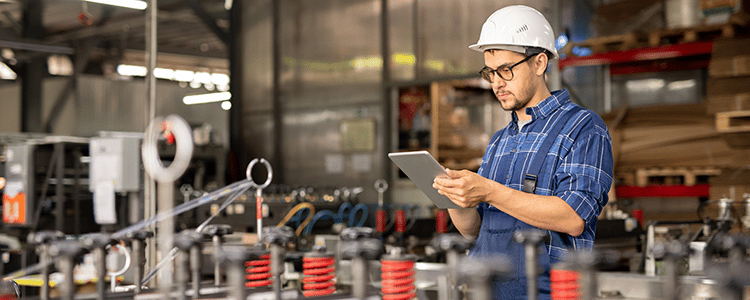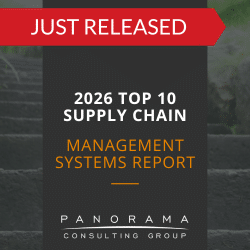As it expands in scope and sophistication, machine learning (ML) has changed how most industries function. Arguably, nowhere is this truer than in manufacturing. Automated and intelligent tools are quickly replacing manual processes, optimizing every component of the supply chain.
By implementing machine learning in manufacturing, business leaders can recognize new efficiencies, solve common pain points, and keep pace with changes in customer demand.
Interested in incorporating ML into your warehouse and offices? Today, we’re sharing six benefits you can expect when you embrace this technology.
6 Benefits of Machine Learning in Manufacturing
1. Predict Equipment Failures
How much time do you spend on equipment breakdowns? When a machine malfunctions, it’s more than a nuisance. It requires significant time and money to fix, not to mention the losses associated with downtime.
With machine learning, manufacturing companies can predict such failures before they even occur. Once ML learns how your machines are intended to operate, it will immediately sense when something is off, and it will let you know. This way, you can schedule maintenance and curb any minor issues before they snowball into bigger problems.
If you integrate ML into your enterprise software, such as a manufacturing ERP system, these updates will appear right on your dashboard. Then, you can take a predictive approach to equipment maintenance based on performance data.
2025 Top 10 Manufacturing ERP Systems Report
Are you a mid- to large-sized manufacturing firm? This report is for you. Download it now to learn what kind of advanced functionality is available in the market today.
2. Reduce Operational Costs
Have you noticed that costs seem to have increased around your warehouse lately? Raw materials are more expensive, and it’s costing more to fully train and prepare team members. Then, there are expenses associated with machine and asset maintenance.
While ML can’t fully eliminate all these costs, it can help you curtail them. In addition to predictive maintenance, this technology has other cost-saving benefits on the factory floor. For instance, you may be able to program your electrical system to only run the air conditioning units during certain peak hours, reducing usage during downtime.
In time, these monthly savings can add up. You’ll find that your in-house operations not only run more smoothly, but they’re also more affordable to maintain.
3. Improve Product Quality
Increasingly, modern consumers are prioritizing product quality over price. For manufacturers, this means there’s no room to cut corners.
Improving product quality typically means investing in better machines and revamping quality control (QC) testing procedures. With ML, product inspection and quality control are much easier, faster, and more accurate. Computer vision algorithms gather and learn from historical data, so they can distinguish a quality product from a faulty one.
This means that manufacturers can automate much, if not all, of the inspection and supervision process. You don’t even have to create an extensive list of potential defects to check, as the only thing that’s needed is a “good” sample for the machine to reference. This prevents user error, saves time on visual quality checks and frees up your teams to pour more energy into product development.
4. Reduce Inventory Waste
According to one report, around 20% to 30% of inventory is either dead or obsolete, even in well-run companies. In an era where sustainability is more important than ever, this isn’t a cost that any manufacturer should have to shoulder.
With ML, you can more accurately predict demand based on historical data. Then, you can optimize your production schedules accordingly.
Depending on your setup, you may even be able to leverage ML to move to a just-in-time production approach. With this strategy, you only produce goods as they are needed, which minimizes the time, materials, and labor required in manufacturing.
Even if you don’t fully transition into this business model, you can use ML to reduce stock levels in your warehouse and avoid costly overruns.
5. Optimize Time Management
How much money would you estimate your company spends each year on paperwork, processing, and manual practices? How mcuh are you paying employees to track down purchase order numbers, process invoices, and respond to inquiries from customers, stakeholders, and suppliers?
This is one of the most beneficial applications of machine learning. With ML tools, you can automate many of these processes, allowing the software to take the reins so your employees don’t have to. This saves time, money, and stress while also improving accuracy.
Are You Ready to Implement Machine Learning?
As technology continues to change products and services, savvy industry leaders are taking note.
While we’ve shared many of the benefits of machine learning in manufacturing, these aren’t the only ones. The more you can learn about these systems, the stronger your operations can become.
Manufacturers don’t have to apply ML at every touchpoint along their supply chain, but at minimum, it should be used to transform any and all manual, paper-based processes.
Interested in transforming your business processes to take advantage of tools like ML? Our enterprise software consultants can help you excel at software selection so you can achieve the benefits of digital transformation. Contact us below for a free consultation.













